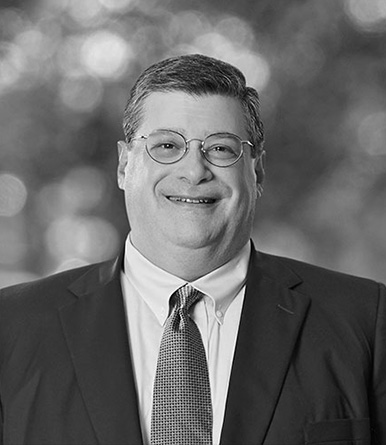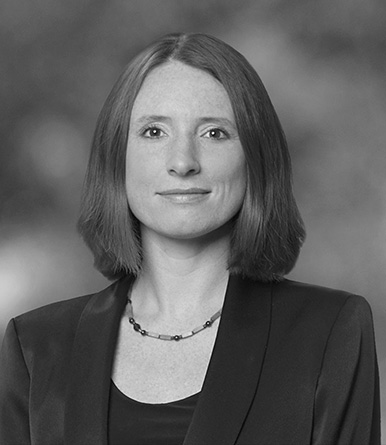Artivism in actionx
The issue of genocide and mass atrocity prevention was center stage in Italy this summer when the Firm supported an exhibit at the Venice Arts Biennale.
Art and activism came together at the world-renowned Venice Arts Biennale in Italy, when the Auschwitz Institute for Peace and Reconciliation (AIPR) opened a powerful exhibit at which the White & Case Business & Human Rights Group recently held an event for Firm clients.

“As well as being the right thing to do, our relationship with the AIPR is also a strong strategic fit for the Firm.”
OWEN PELL
NEW YORK PARTNER
As part of our long-term partnership with the AIPR, the Firm contributed 10 per cent of the funding for ARTIVISM: The Atrocity Prevention Pavilion, as well as providing legal support through the Firm’s Milan office. The Pavilion is an impactful and thought-provoking exhibit featuring artists united by their first-hand experience of genocide or mass atrocity crimes.
New York partner Owen Pell, who is also the President of the AIPR, explains: “We started working with the AIPR’s founder 15 years ago, several years before it was founded.
“From the very beginning, the AIPR’s approach of helping governments around the world to understand and prevent future genocides or mass atrocities was a perfect fit with the Firm’s pro bono work.
“As well as being the right thing to do, our relationship with the AIPR is also a strong strategic fit for the Firm, given our extensive work with sovereigns and our corporate clients, who increasingly face human rights issues and are reaching out to our recently-established Business and Human Rights Group.
“So, when the organizers of the Venice Arts Biennale approached the AIPR about creating a pavilion, the Firm was passionate about being involved. The pavilion was also the perfect backdrop for our Business and Human Rights Group to engage with clients.”
Lasting memorials
ARTIVISM addresses the ways that art has contributed to social and political transformation in the aftermath of genocide and other mass atrocities. The six artists and art collectives featured in the exhibition demonstrate the powerful role that the arts can play in dealing with a violent past and contributing to the efforts to prevent the recurrence of that violence.
Owen says: “When we were first discussing the potential exhibit with curators, some suggested commissioning famous artists to produce work specifically for our Pavilion, but we wanted to take a different approach.
“We eventually chose three curators, two from the Venice Arts Factory and Dr. Kerry Whigham, a teacher and expert on memory and memorialization, as they relate to genocide and mass atrocity prevention.
“For us, it was important that the Pavilion reflects the teaching we do at workshops we run at the AIPR, where we often educate government officials on the importance of memorializing and commemorating genocide and atrocity victims so as to reduce the likelihood that the mistakes of the past are revisited on future generations. Our curators worked to make that vision a reality.
“Each of our artists has developed projects that attempt to return to the victims some measure of the dignity taken from them during the genocide or mass atrocity outbreak they experienced.
“This is significant because history shows that, in the 15-20 years following a genocide or mass atrocity outbreak, there is a high chance of it happening again, so creating impactful memorials is a vital part of the healing and prevention process.”
Our Business & Human Rights Group reception saw Owen and Milan partner Ferigo Foscari host around 20 clients at an event that was popular and well attended.
A call to action
At the end of the exhibition, the curators designed a room that introduces visitors to the work of the AIPR and three other NGOs, and also invites visitors to consider how they can play an active role in preventing future genocides and mass atrocities.

“The thought-provoking exhibit provided a bridge to discuss individual action, government action and corporate action.”
CLARE CONNELLAN
LONDON PARTNER
Owen says: “It’s very easy for people, especially in developed countries, to view genocide prevention as something they can’t influence, but our exhibit came up with an innovative approach, asking visitors to take on either a 60-second, 60-minute or 60-day commitment to action.
“Each NGO in that last room developed projects for the 60-60-60 challenge, and visitors are invited to tear-off sheets on a wall in the last room that set out the challenges.”
Clare Connellan, London partner and head of the Firm’s Business and Human Rights Interest Group, adds: “Our clients face the challenge of navigating the complexity of a growing body of national laws around the world addressing many facets of human rights impacts. The thought-provoking exhibit provided a bridge to discuss individual action, government action and corporate action.”
The response from our clients, Biennale visitors, and the media has been hugely positive.
More than 620 people attended the opening event in May, including the Italian ambassadors of Canada, Australia, South Africa and Flanders, and 3,200 visited over the first month, including German Foreign Minister Heiko Maas.
The AIPR’s research shows that visitors are spending an average of 40-45 minutes in the Pavilion, compared to 15-20 minutes for most Biennale pavilions. The AIPR has also seen a jump in visits to its website, and several museums have expressed an interest in taking the exhibit to other countries, including Germany, Canada, Australia, and the United States after the Biennale concludes in late November 2019.
For more information about our relationship with AIPR read our previous feature. You can also visit the AIPR website at www.auschwitzinstitute.org and learn more about the Biennale Pavilion at www.artivism2019.com.
For more information about the Business & Human Rights Interest Group, visit our Connect page or view our previous feature.





